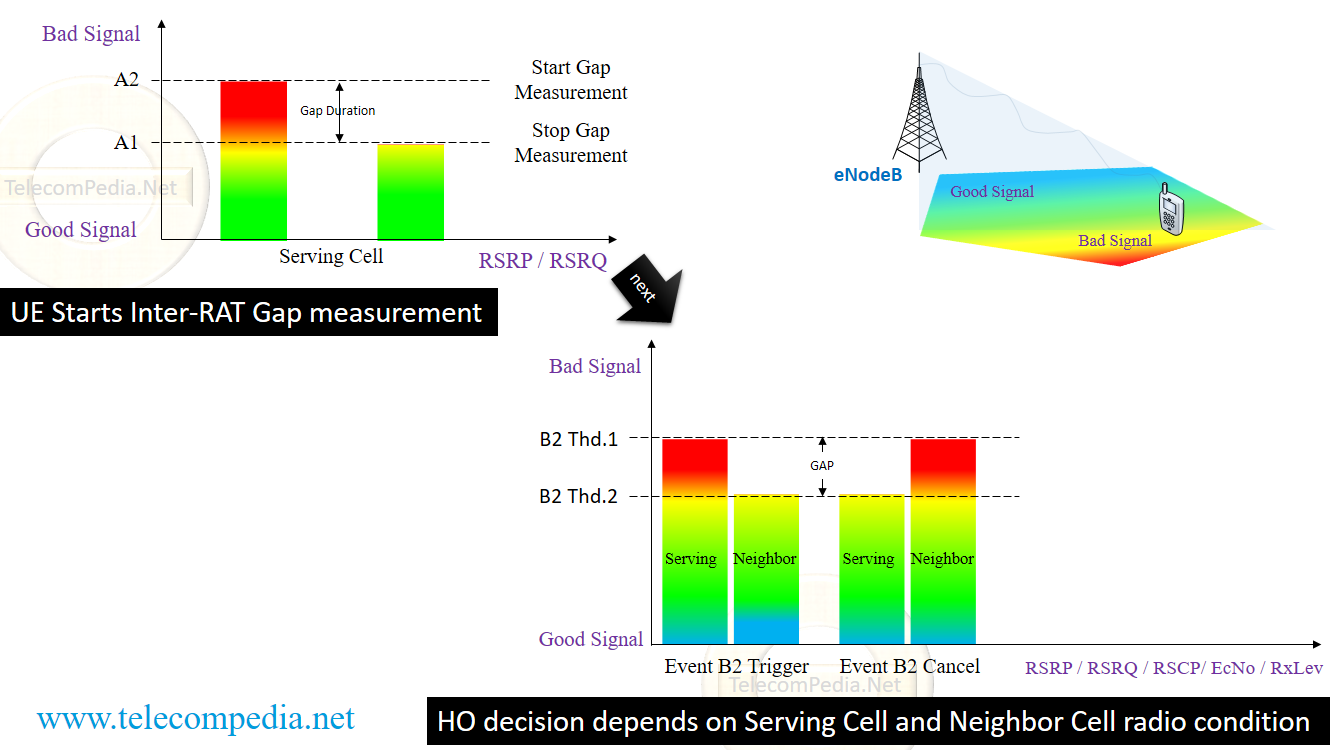Inter-Technology Handover means mobility in connected mode between two different cells and different technology. This topic will be assigned to Event B2 which is used for LTE Inter-Technology handover. This event type is also known as Inter-RAT or Inter-System handover. B2 is a little bit different than B1 Handover. First step is same with event B1 to start gap measurement or stop, but to start handover there are two conditions which was defined with two different thresholds and need to be met for both at the same time (B2 Thd.1 and B2 Thd.2).
It is recommended to have a look HO Events in LTE before reading this topic.
Details:
• LTE Event A2 is triggered when the serving cell becomes worse than a threshold
Event A2 triggering (start measurement for other technology):
Mserv + Hyst < Threshold
• LTE Event A1 is triggered when the serving cell becomes better than a threshold.
Event A1 triggering (stop measurement for other technology):
Mserv – Hyst > Threshold
• LTE Event B2 is triggered when the serving cell becomes worse than B2 Thd.1 while a neighboring cell becomes better than B2 Thd.2. The event is triggered when both of the following conditions are met.
Event B2 triggering (start inter-technology handover):
Condition#1: Mserv + Hyst < B2 Thd.1
Condition#2: Mneigh + Oneigh,freq – Hyst > B2 Thd.2
Mserv: signal level or quality of the serving cell (RSRP or RSRQ).
Mneigh: signal level or quality of the neighbor cell (RSCP, EcNo, RxLev).
Threshold: defined signal thresholds for A1 and A2 to start and stop gap measurement.
B2 Thd.1: defined signal threshold for serving cell.
B2 Thd.2: defined signal threshold for neighbor cell.
Hyst: hysteresis, it is defined in eNodeB and used to avoid ping-pong handover.
Oneigh, freq: indicates the frequency offset for the inter-technology neighboring cell.
Time to Trigger: this timer helps to avoid irregular measurement and handover.
* Note: all types of triggers is evaluated during Time to Trigger period and occur if the condition stays stable during the period, otherwise the event will be cancelled without triggering.
Conclusion:
Signal of serving cell is poor and UE starts to make measurement with A2 to find better neighbor cell, if the serving cell signal is getting better during Time to Trigger then the UE stops measurement with A1. If it is not getting better during the Time to Trigger then it will make handover with B2 if serving cell signal is below than specified threhold as well as the neighbor cell signal is better than second specified threhold.

Thanks for this clear and simple explanation .
I want to know if A2 event is not satisfied then B2 event will never happen ?
thanks